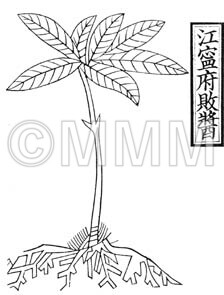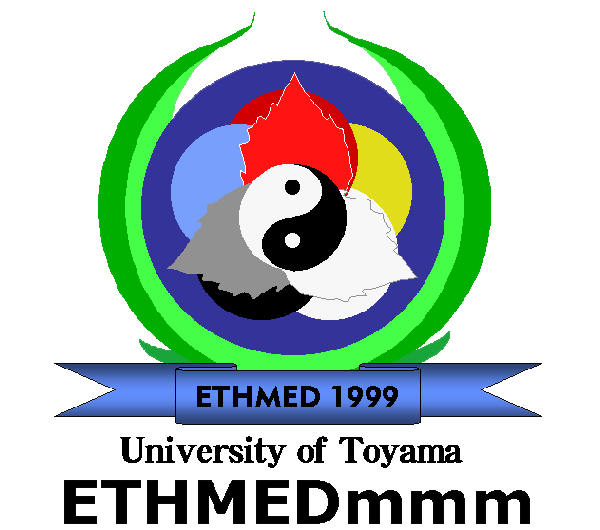Crude drug sample data base
※Click on the image to enlarge it.
Scientific information data base
| Common name | 敗醤草, Baijiangcao, Thlaspi Herba (CP2020: 菥蓂), Boor's Mustard Herb (CP2020: 菥蓂) | |||||
|---|---|---|---|---|---|---|
| Synonyms | 敗醤根, Baijianggen, Patriniae Radix | |||||
| crude drug image |
| |||||
| Original plant name | Patrinia villosa Juss.<オミナエシ科/Valerianaceae>1, Thlaspi arvense L.<アブラナ科/Brassicaceae>2, Sonchus brachyotus DC.<キク科/Asteraceae/Compositae>3, [Otokoeshi1, Genbainazuna2, Hachijōna3] | |||||
| original plant image |
| |||||
| Used part | root1, whole plant with fruit2, whole plant with root3 | |||||
| Official compendium | CP (2020 ed.) | |||||
| Clinical application | P. villosa: Removing inflammation or blood stasis, and draining pus. It is applied in the treatment of tumor, edema, leukorrhea and abdominal pain after childbirth and all. T. arvense: Applied to eye disease as an anti-inflammatory and analgesic. | |||||
| Medical system | Traditional Chinese medicine | |||||
| Drug effect in traditional medicine | Traditional classification | Febrifugal and detoxicant drugs | ||||
| Beneficial effect | P. villosa: [Property and Flavor] Cool; pungent, bitter [Meridian Tropism] Stomach, large intestine and liver meridians. [Actions] To clear away heat and toxic material, to clear abscess and to drain pus, to eliminate blood stasis and relieve pain. [Indications] Carbuncle of bowel and lung, abscess and sores, blood stasis, chest and abdominal pain, hyperemesis and stomach ache of after childbirth | |||||
| Chemical constituent | Monoterpenoids P. villosa (根および根茎/root & rhizome) (*C1): Loganin, Villoside, Villoside tetraacetate, Morroniside Glucosinolate T. arvense (全草および種子/whole plant & seeds) (*C1): Sinigrin Others T. arvense (全草および種子/whole plant & seeds) (*C1): Myrosin(酵素/enzyme) | |||||
| Chemical structure |
※画像をクリックすると、拡大して表示されます。 | |||||
| Pharmacological effect | Antibacterial (Staphylococcus aureus)and sedative. | |||||
| DNA sequence | AF144360, AF016841; Traditioal Medical & Parmaceutical Database. | |||||
| Classical reference (Chinese Herbal Classic "Zhenglei bencao") |  ※Click this image to see the actual image ※Click this image to see the actual image | |||||
| Disease | Lung suppurations, Pyogenic dermatosis, Chest pain, Abdominal pain, Appendicitis | |||||
| Formulation | Kikyoto, Yokuibushihaishosan | |||||
| References | CP2020: Pharmacopoeia of the People's Republic of China 2020 edi. C1) The Encyclopedia of Wakan-Yaku with Color Pictures Vol. II, pp 64-66. | |||||
| Remarks | The genuine "Baijiangcao (敗醤草)" is P. villosa of family Valerianaceae (Jap. name: Otokoeshi). At present, there are two kinds of "Baijiangcao (敗醤草)" in China. In northern district, S. brachyotus of family Compositae (Jap. name: Hachijōna) is used. Instead, T. arvense of family Cruciferae (Jap. name: Gumbainazuna) is used in southern district. Japanese Baijiangcao is the root of P. villosa of family Valerianaceae (Jap. name: Otokoeshi). Note that each beneficial effect is different. It depends on the original plant. | |||||
| Last renewal date | 2021/09/27 | |||||











